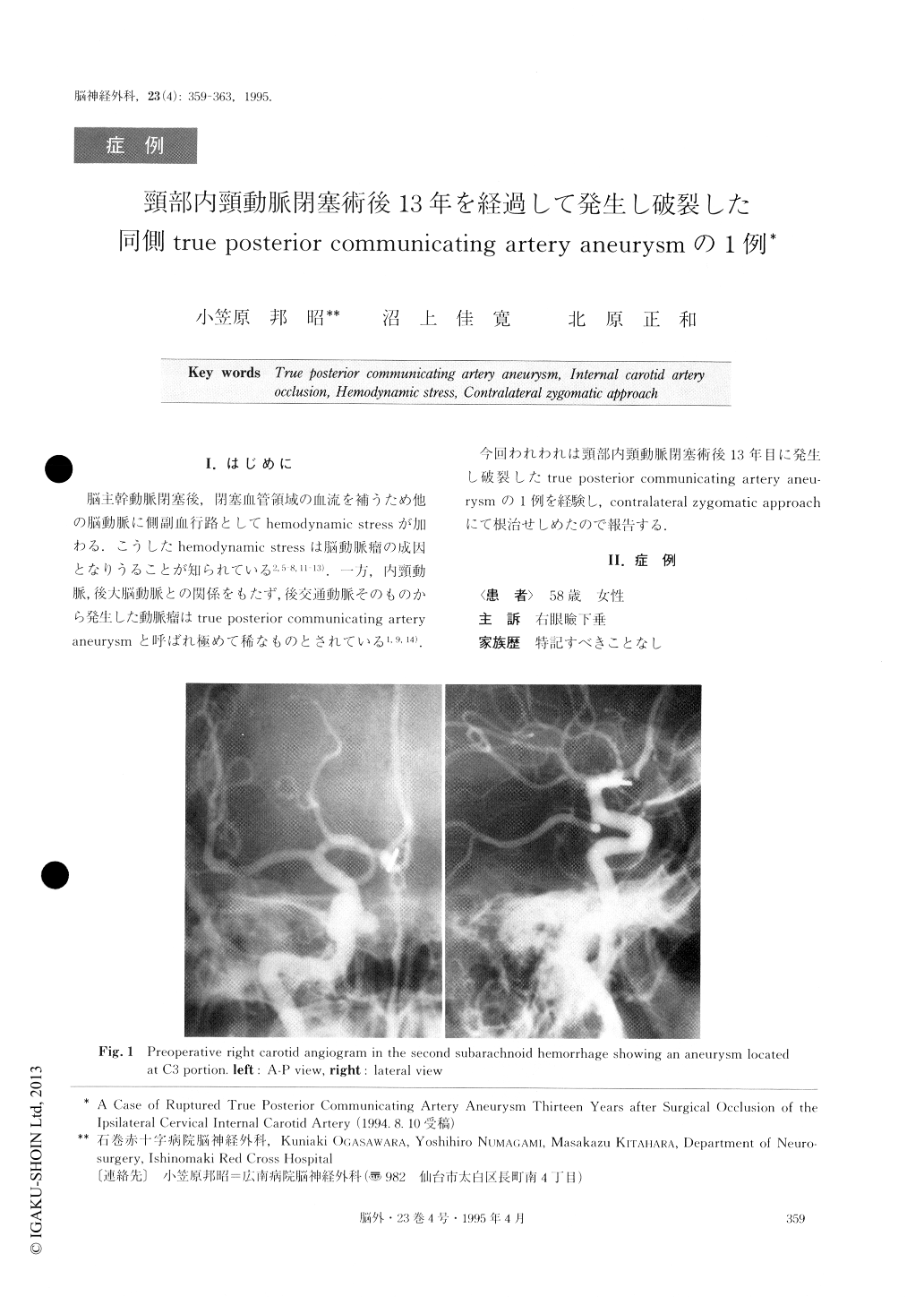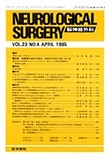Japanese
English
- 有料閲覧
- Abstract 文献概要
- 1ページ目 Look Inside
I.はじめに
脳主幹動脈閉塞後,閉塞血管領域の血流を補うため他の脳動脈に側副血行路としてhemodynamic stressが加わる.こうしたhemodynamic stressは脳動脈瘤の成因となりうることが知られている2,5-8,11-13).一方,内頸動脈,後大脳動脈との関係をもたず,後交通動脈そのものから発生した動脈瘤はtrue posterior communicating artery aneurysmと呼ばれ極めて稀なものとされている1,9,14).
今回われわれは頸部内頸動脈閉塞術後13年目に発生し破裂したtrue posterior communicating artery aneu—rysmの1例を経験し,contralateral zygomatic approachにて根治せしめたので報告する.
A case is presented of ruptured“true”posterior com-municating artery aneurysm thirteen years after surgic-al occlusion of the ipsilateral cervical internal carotid artery.
A 58-year-old female developed the sudden onset of blepharoptosis on the right side. She had had a right superficial temporal artery-middle cerebral artery anas-tomosis and a surgical occlusion of the right cervical in-ternal carotid artery 13 years earlier for a subarachnoid hemorrhage that occurred as the result of a ruptured aneurysm of the right internal carotid artery. Neurolo-gical examination on admission revealed an occulomo-tor palsy on the right. Cerebral angiograms demons-trated an, aneurysm arising from the right posterior communicating artery itself near the right posterior cerebral artery. Also, the right intracranial internal carotid artery was supplied through the right posterior communicating artery. Five days later she experienced the sudden onset of severe headache. CT scan showed subarachnoid hemorrhage in the ambient cistern. Neck clipping of the aneurysm was successfully performed by the contralateral zygomatic approach. The pos-toperative course was uneventful.
It has been well known that internal carotid artery occlusion may be associated with cerebral aneurysm in some cases. However, it seems to be very rare that a “true”posterior communicating artery aneurysm should occur following the ipsilateral carotid artery occlusion. Hemodynamic factors were strongly suggested as the reason for aneurysmal formation in this case.

Copyright © 1995, Igaku-Shoin Ltd. All rights reserved.


